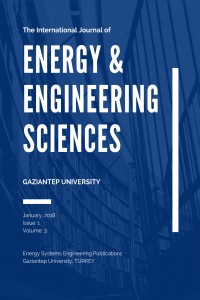Abstract
The aim of this study
is to investigate the effects of using polyvinyl chloride dust on the
compressive strength and shrinkage behavior of self-compacting concrete. Self-compacting
concrete mixtures with polyvinyl chloride dust content were designed with a
total binder content of 550 kg/m3 and a water-to-binder (w/b) ratio
of 0.35. Also fly ash content
of the concrete batch was 110 kg/m3 . Polyvinyl chloride dust was added in place of Portland cement at replacement
levels of 0%, 5%, 10%, 15%, 20%, and 25% by weight in all mixtures. Six mixtures
(one is selected as control mixture) were used in the study. According to test
results, the compressive strength of the concrete
samples significantly decrease with
increasing polyvinyl chloride dust content. Dry shrinkage decreses when the
percentage of polyvinyl chloride dust in the self-compacting concrete mixture increases.
Similar to the drying shrinkage test results, self-compacting concrete
incorporated with polyvinyl chloride dust exhibite lower weight loss in comparison with the
control mixture. Also restrained shrinkage rate
of self-compacting concrete
specimen decreases when the percentages of polyvinyl chloride dust in
specimen increse.
References
- [1] Seshaiah B, Lalitha K. Experimental Study on the Performance of Concrete with Polymer (PVC) as Filler Material International Journal of Research Sciences and Advanced Engineering 2017; 2 (18); 74-80.
- [2] Senhadji Y, Escadeillas G, Benosman AS, Mouli M, Khelafi H, Ould Kaci S. Effect of incorporating PVC waste as aggregate on the physical, mechanical, and chloride ion penetration behavior of concrete, J Adhes. Sci. Technol. 2015; 29: 625-640.
- [3] Ozawa K, Maekawa K, Kunishima H, Okamura H. Performance of Concrete Based on the Durability Design of Concrete Structures. Proce. the second East-Asia-Pacific Conference on Structural Engineering and Construction 1989; 1: 445-456.
- [4] Khayat KH, Bickley J, Lessard M. Performance of self-consolidating concrete for casting basement and foundation walls. ACI Mater J 2000; 97(3):374–380. [5] ASTM C39 Standard Test Method for Compressive Strength of Cylindrical Concrete Specimens (1998). ASTM International.
- [6] ASTM International, ASTM C157, Standard Test Method for Length Change of Hardened Hydraulic-Cement Mortar and Concrete, Annual Book of ASTM Standards, ASTM International, West Conshohocken, Pa, USA, 2007.
- [7] Wiegrink K, Marikunte S, Shah SP. Shrinkage cracking of high-strength concrete, ACI Materials Journal 1996;93: 409–415.
- [8] Shah S, Karaguler PME, Sarigaphuti M. Effects of shrinkage-reducing admixtures on restrained shrinkage cracking of concrete. ACI Materials Journal 1992; 89,289–295.
- [9] Ropke JC, Concrete problems: causes, and cures. Illustrated ed. Michigan: McGraw-Hill Inc., 1982.
- [10] Neville A. Concrete Neville’s Insights and Issues, Thomas Telford Publishing, 2006.
- [11] Atmaca N, Abbas ML, Atmaca A. Effects of Nano-Silica on the Gas Permeability, Durability and Mechanical Properties of High-Strength Lightweight Concrete. Construction & Building Materials 2017; 147: 17–26.
Abstract
References
- [1] Seshaiah B, Lalitha K. Experimental Study on the Performance of Concrete with Polymer (PVC) as Filler Material International Journal of Research Sciences and Advanced Engineering 2017; 2 (18); 74-80.
- [2] Senhadji Y, Escadeillas G, Benosman AS, Mouli M, Khelafi H, Ould Kaci S. Effect of incorporating PVC waste as aggregate on the physical, mechanical, and chloride ion penetration behavior of concrete, J Adhes. Sci. Technol. 2015; 29: 625-640.
- [3] Ozawa K, Maekawa K, Kunishima H, Okamura H. Performance of Concrete Based on the Durability Design of Concrete Structures. Proce. the second East-Asia-Pacific Conference on Structural Engineering and Construction 1989; 1: 445-456.
- [4] Khayat KH, Bickley J, Lessard M. Performance of self-consolidating concrete for casting basement and foundation walls. ACI Mater J 2000; 97(3):374–380. [5] ASTM C39 Standard Test Method for Compressive Strength of Cylindrical Concrete Specimens (1998). ASTM International.
- [6] ASTM International, ASTM C157, Standard Test Method for Length Change of Hardened Hydraulic-Cement Mortar and Concrete, Annual Book of ASTM Standards, ASTM International, West Conshohocken, Pa, USA, 2007.
- [7] Wiegrink K, Marikunte S, Shah SP. Shrinkage cracking of high-strength concrete, ACI Materials Journal 1996;93: 409–415.
- [8] Shah S, Karaguler PME, Sarigaphuti M. Effects of shrinkage-reducing admixtures on restrained shrinkage cracking of concrete. ACI Materials Journal 1992; 89,289–295.
- [9] Ropke JC, Concrete problems: causes, and cures. Illustrated ed. Michigan: McGraw-Hill Inc., 1982.
- [10] Neville A. Concrete Neville’s Insights and Issues, Thomas Telford Publishing, 2006.
- [11] Atmaca N, Abbas ML, Atmaca A. Effects of Nano-Silica on the Gas Permeability, Durability and Mechanical Properties of High-Strength Lightweight Concrete. Construction & Building Materials 2017; 147: 17–26.
Details
| Primary Language | English |
|---|---|
| Journal Section | Articles |
| Authors | |
| Publication Date | January 31, 2018 |
| Acceptance Date | February 18, 2018 |
| Published in Issue | Year 2018 Volume: 3 Issue: 1 |
No part of the material protected by this copyright may be reproduced or utilized in any form or by any means, without the prior written permission of the copyright owners, unless the use is a fair dealing for the purpose of private study, research or review. The authors reserve the right that their material can be used for purely educational and research purposes. All the authors are responsible for the originality and plagiarism, multiple publication, disclosure and conflicts of interest and fundamental errors in the published works.
*Please note that All the authors are responsible for the originality and plagiarism, multiple publication, disclosure and conflicts of interest and fundamental errors in the published works. Author(s) submitting a manuscript for publication in IJEES also accept that the manuscript may go through screening for plagiarism check using IThenticate software. For experimental works involving animals, approvals from relevant ethics committee should have been obtained beforehand assuring that the experiment was conducted according to relevant national or international guidelines on care and use of laboratory animals. Authors may be requested to provide evidence to this end.
Copyright © 2025. AA. All rights reserved


